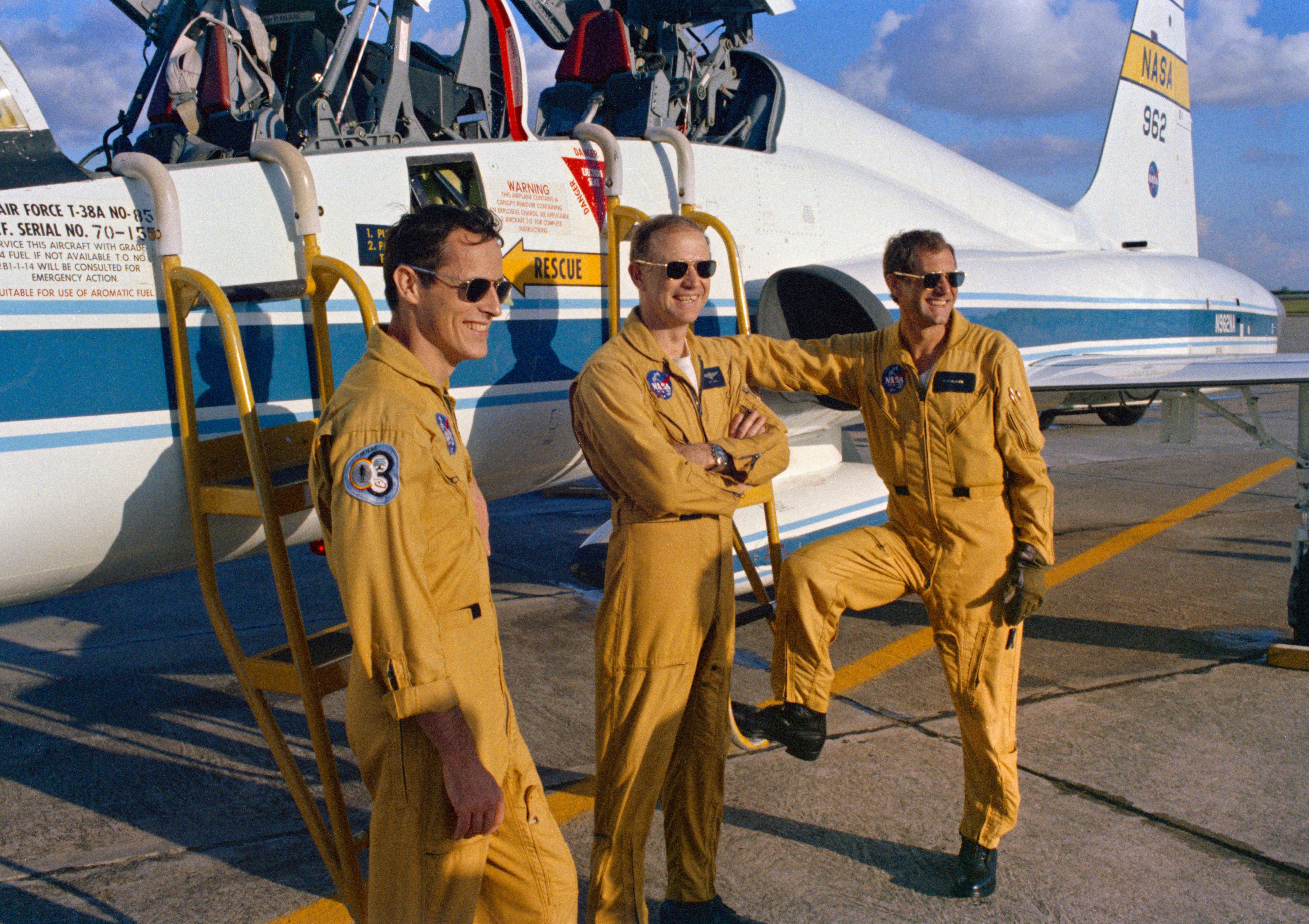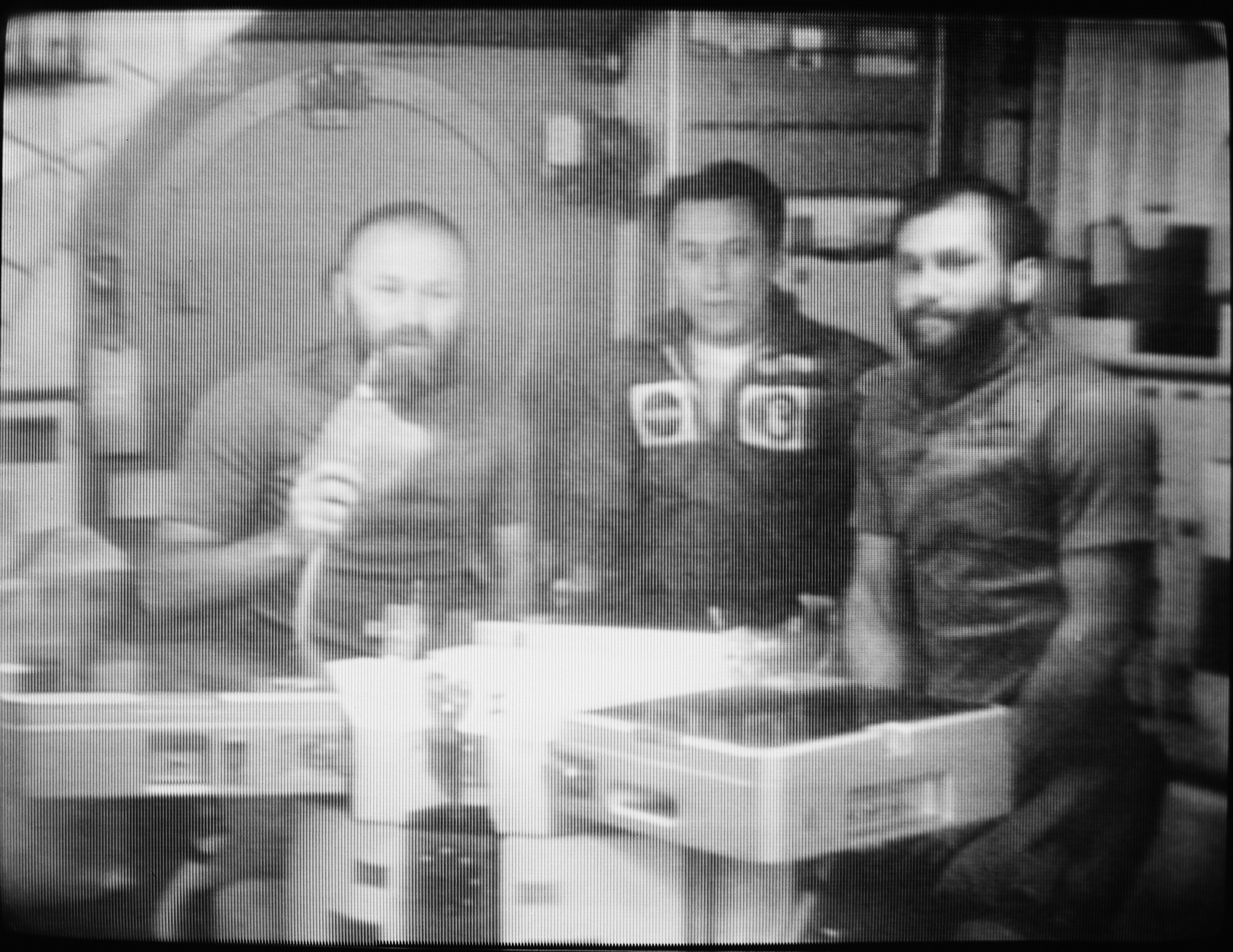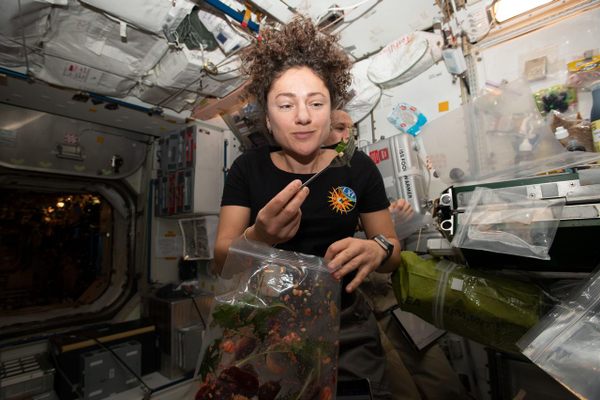Did 3 NASA Astronauts Really Hold a ‘Space Strike’ in 1973?
Digging into a legendary moment in the history of extraterrestrial labor.

On December 28, 1973, for a little over 90 minutes, NASA Mission Control in Houston, Texas, lost radio contact with the three astronauts aboard the Skylab space station. Although they could track Skylab as it shot through the sky, each time they buzzed the crew to try to talk to them, they got no response. Then, after they had completed one full orbit of Earth, the three astronauts came online again.
Depending on who you ask, this relatively brief loss of contact was either a space blooper or a deliberately staged strike; a trumped-up accident or a labor milestone. Regardless, that hour and a half, along with the events that came before and after, spurred a canonical inter-atmospheric negotiation. And as with so many things that happen high up in space, the shifting ways in which we tell its story reflect how things are going back down here on Earth.
Although the action in question took place about halfway through the Skylab 4 mission, “tensions seemed to be inevitable from the beginning,” says Taylor Genovese, a PhD student in space anthropology who has studied the event. When the three Skylab 4 astronauts reached the space station, on November 16, 1973, they found that the previous crew had left them a present: three human-sized dummies dressed in flight suits, with name tags that matched their own. “The dummy for Gerald P. Carr, Skylab 4 commander, was placed in the Lower Body Negative Pressure Device,” writes NASA. The pilot, William R. Pogue’s, was on the stationary bike, and the science pilot, Edward G. Gibson’s, “was left in the waste compartment.”

Though clearly meant as a joke by the departing crew, the dummies could also be taken as something of a jab: while both of Skylab’s earlier missions had at least one astro-veteran on the crew, Carr, Gibson, and Pogue were all spaceflight rookies. Meanwhile, Skylab was scheduled for early retirement, and NASA, wanting to squeeze everything they could out of the station, packed the new team’s schedule full. As NASA stated in the mission’s press kit, “Earth resources, solar astronomy, medical and other experiments will fill the waking hours of the Skylab crewmen.” There were few breaks for rest, recalibration, or easing into the zero-gravity lifestyle.
This had near-immediate consequences. By their first evening, communication between the crew and Mission Control had already begun to go south, thanks to some unexpected vomit. Docking into Skylab made all three crew members nauseous; after their first space dinner, Captain Pogue belied his nickname, “Iron Belly,” by upchucking some stewed tomatoes. As Marsha Freeman writes in her book Challenges of Space Exploration, at this point, “the astronauts should have informed Mission Control, and they should have freeze-dried the product and brought it back for post-flight analysis.”
Instead, after some discussion, they tossed the barf bag through the trash airlock—having decided, as David Shayler writes in Skylab: America’s Space Station, that “if the medics knew that the crew was vomiting, their influence over the rest of the the flight could be quite serious.” After a night of sleep, Pogue felt better.

All three forgot that a tape recorder had been running the whole time. The next morning, when Mission Control read the transcripts—which included the discussion in which the crew decided to lie to them—they were angry. “The crew was reprimanded—the first time astronauts had ever been publicly reproved during a flight,” wrote Henry S.F. Cooper in an article for the New Yorker. “The incident and the reprimand doubtless affected much that happened later.”
Meanwhile, the crew embarked on their rigorous workload. Almost immediately, they fell behind schedule, stymied by the challenges of working around the clock in a brand new environment. They began to push back: “There is no way we can do a professional job,” Pogue said on a tape sent to NASA scientists on the ground. “We’re pressed bodily from one point of the spacecraft to another with no time for even mental preparation.”
Every 10 days, they were supposed to get one free day to shower and kick back, but for the first month, they were so behind that they worked right through those days off. “It was almost to the point where you almost had to schedule a time when you could go to the bathroom, it was that tightly scheduled,” Carr later recalled.

As Cooper detailed in his article, there were other gripes, too—from both sides. Gibson, a stylish guy back on Earth, kvetched about his monochrome space wardrobe. “I feel like I’ve been drafted into the Army with this darn brown … I’d like to get some different color T-shirts,” Cooper quotes him as saying. There were also more concrete clothing complaints: “One thing I would like to have is a couple of plain old handkerchiefs around here,” said Gibson, who hated tissues. (He also disliked the towels, which he said were scratchy and non-absorbent.)
What’s more, bad design meant that none of the astronauts’ tools fit in the particular pockets they were supposed to. As a result, they had to put them in other spots, which led to some downright dangerous Macguyvering: “Every time I raise my right foot to tie my shoelace, I jab myself in the groin with the scissors,” Carr told Cooper.
This discontentment came through in various ways. All three grew beards: an unusual choice, and one that Cooper writes “made the men on the ground uneasy.” Eventually, he writes, Mission Control began “openly [describing the crew] as lethargic and negative”—something that had never happened before. Their clear displeasure failed to effect any changes: “The controllers heard their complaints, but always expected them to break through the barrier,” writes Shayler.

A few days before New Year’s Eve, they hit that barrier instead. (This is also where the story gets a bit, well, spacey.) For a full orbit during that day—a little over 93 minutes—none of the astronauts manned any of the radios that connected them to Mission Control. Depending on whose account you are relying on, this may have been an accident: in David Hitt’s 2008 book Homesteading Space, Gibson says that the three men simply failed to synchronize their radio response shifts, and that as a result, “one day we made a mistake and for a whole orbit we all had our radios off!” The press, he says, misconstrued this as a purposeful action. “There was no ‘strike in space’ by any stretch of the imagination,” Gibson says in the book. “What could we threaten to do, go live on the moon?” He says the same in his oral history, calling it a “myth.” (A 2016 Reddit thread details the case against the “strike” characterization extensively.)
But other accounts suggest it was at least somewhat purposeful. In a 1997 New York Times interview, Carr says that at that point, he and his crewmates had told Mission Control that they were finally taking their day off, which they emphasized by shutting off the radios. “We looked out the window, took showers, and did that sort of thing,” he said. In his own oral history, he describes that day as one where they “did what they wanted to do,” reading, looking out the window, and doing some off-the-cuff experiments. But there, he too says that they got “careless with the radios,” and that the press had blown things out of proportion.
Whether it was the radio issue, the lingering aura of the vomit incident, or the pattern of complaints—or, more likely, just everything together—it was now clear that certain things needed to be hashed out between Mission Control and the Skylab 4 crew. On December 28, Carr got on the radio and laid down what he described as a “special message” for Phil Shaffer, the flight director, and Dick Truly, the Capsule Communicator (or CAPCOM).* In it, he requested a conversation: “Are we behind, and if so, how far? Or is all this hustle over our time a result of people coming out of the woodwork with new things to be done?” he asked. “I’d like to get some straight, unabridged words from you guys on just exactly where we stand… we’d like to be in on the loop.”

Two days later, that conversation began. Firstly, the astronauts laid out their side of things. “I told them everything,” Carr later recalled. “I said, ‘We need more time to rest. We need a schedule that’s not quite so packed. We don’t want exercise after a meal anymore. We need to get the pace of things under control.’” Next, it was Mission Control’s turn. According to NASA transcripts, they had five pages of “comments and status statements” teleprinted on board Skylab. They then gave the astronauts the “straight, unabridged words” they’d asked for. “It’s apparent to us… that the scheduling was too ambitious,” Truly said. They continued in this vein, briefly interrupted every 10 minutes or so as Skylab lost and regained contact with the ground. (Carr was willing to give this part of the situation a title: he later described this as the “first sensitivity session” in space.)
The negotiations were successful. For the last half of the mission, the astronauts of Skylab 4 got mealtimes and evenings off. Rather than being rigorously scheduled, the day’s tasks were added to a “shopping list” posted in the station, which the astronauts then completed when they decided the time was right. “It worked beautifully,” Carr said. “It turns out, when the mission was over, we completed every one of the experiments that we needed to do.”
The Skylab 4 crew did their job in another important way: the unusually strained relationship they had with Mission Control gave NASA the kind of information about long-term life in space that they couldn’t get from medical readings. In a 1985 publication, Living Aloft: Human Requirements for Extended Spaceflight, NASA researcher M.M. Connors referenced the crew extensively in a chapter on “Organization and Management.”
“Conflict is often instrumental, in the sense that it helps the contending parties reach important goals,” Connors wrote. “In the absence of conflict, the Skylab 4 crew might have remained saddled with a work schedule which undermined their morale and impaired the overall quality of their performance.”
Over the past few years, the story of the Skylab “strike” has come back into public orbit, gaining coverage in the LA Times, Smithsonian, Gizmodo, and elsewhere. When William Pogue died in 2014, it made up the lead anecdote in his New York Times obituary. While in the years after their mission, the astronauts pushed back against characterizations of their action as a strike (or, worse, a mutiny), Genovese thinks it’s possible that this was a contextual decision: “It seems that, post-mission, the astronauts themselves did not want to be recognized as some kind of labor leaders,” he says, “especially during a time when the United States was still locked in the Cold War.”
Times have changed, and for the most part, these more recent articles portray the strike as an entirely positive action, as does Genovese. “NASA still views spaceflight as being solely a privilege … but it is also a site where an enormous amount of human labor takes place”—labor that, he says he has found during talks with other astronauts, is not always recognized as the type that deserves a back-and-forth. “That [relationship] has only been shattered during one event: Skylab 4’s radio silence,” Genovese says. “Whether intentional or not, it got results.”
*Correction: This post previously stated that Dick Truly was working as a Civil Air Patrol Communications Officer. He was actually a Capsule Communicator, or CAPCOM.









Follow us on Twitter to get the latest on the world's hidden wonders.
Like us on Facebook to get the latest on the world's hidden wonders.
Follow us on Twitter Like us on Facebook